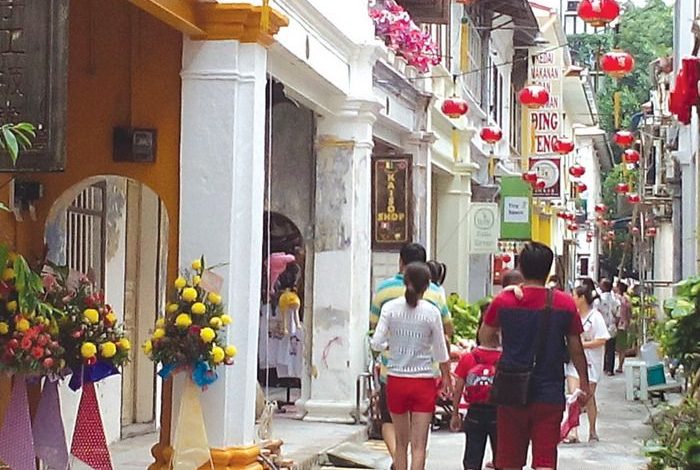Ipoh Old Town to be Historical and Multi-cultural Enclave


By Jerry Francis
Ipoh’s Old Town sector is to become the historical and multi-cultural enclave of the city.
It is to showcase the history and diverse cultures in pioneering the development of a once riverine Malay kampong into a thriving tin mining city – a testimony of success of the Malay settlers, Orang Aslis, migrant Chinese and Indian merchants in working harmoniously to achieve it.
The Ipoh City Council has, jointly with the Town and Rural Planning Department, drawn an elaborate development plan, known as ‘Rancangan Kawasan Khas Pekan Ipoh – Bandar Warisan Bijeh Timah, 2020.’
The plan includes various proposals for development. It calls for the city centre to be divided into various zones.
Within the core area, which includes part of the New Town sector, will be the administration, multi-culture and traditional businesses zones.
These zones will include Little India, Jalan Panglima Bukit Gantang, Jalan Maharaja Lela, Jalan Panglima Bukit Gantang, and Jalan Bijeh Timah.
And, outside the core area are the services, mixed business and community zones. They include Kinta Heights and part of the New Town sector.
However, since most of the heritage buildings are in the Old Town sector, the plan for a historical and multi-cultural enclave in the city is therefore centred on this sector.
The city council has identified 14 heritage buildings under category one and 33 heritage buildings under category two within the core area.
Among those under category one are J.W.W. Birch Memorial Clock Tower, Town Hall, Railway Station, High Court, Royal Ipoh Club, and St Michael’s Institution.
Estimates for providing facelifts alone to these heritage buildings will cost over RM70 million.
The plan also proposes the creation of pedestrian and tricycle routes, traffic-free zones and street malls. These will be around Jalan Sultan Yusof, Jalan Bijeh Timah and Jalan Panglima, where a traffic-free zone can be declared on Sundays.
Currently, a ‘Heritage Walk’ has been established linking Jalan Maharaja Lela, Jalan Panglima, Lorong Panglima and Jalan Bijeh Timah. It will eventually connect to the Kinta riverbank.
The stretch of Kinta River from Jalan Raja Musa Aziz bridge to Kg. Kuchai is to be divided into three sections, namely Kinta Riverfront, Dulang Waterfront and People’s Park Riverfront.


Dulang Waterfront, which is being planned between the Jalan Sultan Iskandar Shah bridge and Jalan Sultan Idris Shah bridge, is to be the main attraction. It will be linked to the New Town sector by a pedestrian bridge. Both sides of the embankment will be beautifully landscaped with fountains, children’s playgrounds, food outlets, commercial kiosks, footpaths and jetties. Beside the pedestrian bridge, which will connect both sides of the embankments, will be an arcade in the shape of a tin dredge.
Kg. Kuchai, located opposite People’s Park Riverfront, is being earmarked for mixed development.
In order to ensure the stretch of the Kinta River is clean and deep enough for water related recreational activities, a floating rubbish boom is proposed near Jalan Raja Musa Aziz bridge and another inflatable rubber dam at the Jalan Datoh bridge. The aim is to keep the river clean and to raise its water level from 0.75m to 2m to allow water-related activities to be organised.
An inflatable rubber dam is currently operating between Jalan Lim Boo Seng bridge and Jalan Sultan Idris Shah bridge.


Only about five years ago, the Old Town sector located on the right bank of the Kinta River that bisects Old Town and New Town, consisted largely of condemned, dilapidated and vacant business premises.
It was the result of Ipoh – “City That Tin Built” being badly affected by the collapse of the tin mining industry in the Kinta Valley in mid 80s. For many years there appeared to be no hope of recovery from the economic setback.
Many property owners discovered it was more lucrative to convert their pre-war buildings into swiftlet hotels – painting a gloomy picture of a city that was once vibrant.
Although some efforts were made by individuals, including professionals, who bought the old buildings cheaply and began to show enthusiasm in restoring them, it was a slow process.
However, it took a near disastrous incident – collapse of two shop lots in the notorious Panglima Lane in 2011, for people to take note and begin to seriously look into what needed to be done to revive the old sector of the city.
Following the incident, the Ipoh City Council also issued a “repair or demolish” ultimatum to the owners of the affected buildings and other condemned and dilapidated buildings that could pose a danger to pedestrians. This ignited an interest to restore Panglima Lane and the vicinity around as a heritage site.
Since then the restoration effort has been moving at a fast pace and the price of properties within the Old Town sector began to skyrocket – in some cases as much as five times.
During weekends and public holidays, scores of tourists are flocking in to tour and photograph the heritage sites and taste the well-known local cuisine.
“Panglima Lane is slowly becoming like Jonker Street in Melaka,” said Datuk Lee Heng, a local veteran real estate agent.
Lee, who is also a city councilor, had purchased two properties in Panglima Lane and restored the premises for rental.
“Buying the properties at a high price just for investment is not advisable,” added Lee, who has been in the real estate business for over 30 years. This is so because you cannot fetch high rental now and at the same time the assessment rate for the properties in the city is high.
However, he is confident that the Old Town sector will become a major tourist attraction in the city.


